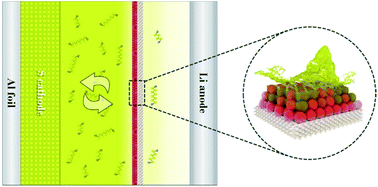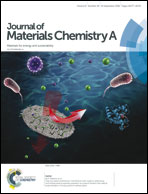Entrapping polysulfides by using ultrathin hollow carbon sphere-functionalized separators in high-rate lithium-sulfur batteries†
Abstract
Lithium-sulfur batteries (LSBs) have been regarded as the most promising technology for next generation energy storage systems owing to their high energy density and low cost. However, the undesirable shuttle effect and low utilization of sulfur caused by dissolution and migration of polysulfide intermediates greatly restrict their practical application. Herein, we report a functional separator modified with novel ultrathin hollow carbon spheres (UHCSs) to improve the overall performance of LSBs and demonstrate for the first time that nonporous hollow structured carbon materials are ideal candidates for modifying the separator due to their unique properties. The ultrathin and nonporous shell of the coated UHCSs can act as a physical and a chemical barrier to effectively entrap lithium polysulfides owing to fewer diffusion sites. The UHCSs can also enhance the electron transfer for sulfur and accommodate the large volume change of sulfur as upper current collectors. When applying such UHCSs functionalized separators, the LSBs achieved a significantly improved electrochemical performance including a high capacity of 1346.3 mA h g−1 at 0.2C and high rate capability with a discharge capacity of 458 mA h g−1 even at 5C upon 1000 cycles.



 Please wait while we load your content...
Please wait while we load your content...
